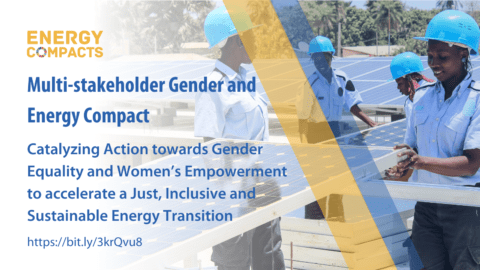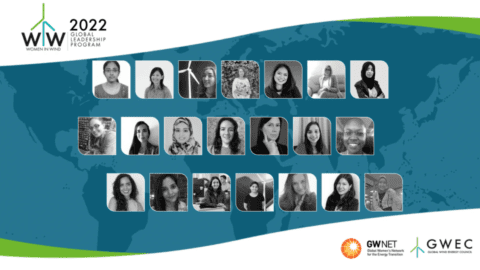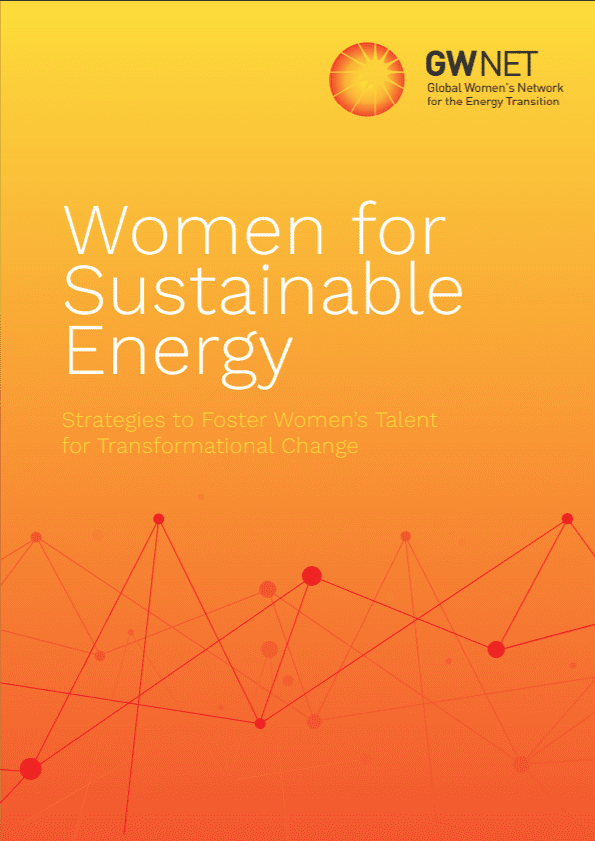By Rabia Ferroukhi
Women currently represent 32% of the renewable energy workforce, substantially higher than the 22% average reported in the global oil and gas industry. The more holistic, democratised energy future represented by renewable energy exerts an appeal on women that the fossil fuel industry has lacked. While women perform better in the renewable energy workforce, their share of employment falls below that of the economy at large (40 to 50% in most of the OECD). They are particularly underrepresented in STEM-related jobs (28%), a much lower share than in administrative jobs (45%).
IRENA’s publication Renewable Energy: A Gender Perspective (2019) identifies several barriers preventing women from entering and advancing in their careers – most important of which are social and cultural norms and related perceptions of gender roles. Specific barriers to entry include prevailing hiring practices, as well as the lack of relevant skills, awareness and networks. The survey-based results of the study highlight the glass ceiling as the most significant barrier to retention and advancement. Other challenges relate to the lack of a supportive environment – flexible work hours, family-friendly measures, mentoring, networking, training opportunities and gender equity targets. Mobility requirements and difficult work schedules also play a role.
Cultural and social norms again play a major role in the context of access, where modern energy services are limited. Additional barriers relate to lack of gender-sensitive programmes and policies, insufficient skills and training opportunities, inequity in ownership of assets, and lack of access to finance.
Gender diversity in renewable energy can be substantially improved in both the modern and access contexts. To engender the energy transition requires actions at different levels: 1- mainstreaming gender at policy design and project implementation, backed by solid disaggregated data gathering and monitoring; 2- tailoring training and skills development in different fields, requiring government coordination of all actors; 3- implementing policies to attract and retain talent to ensure supportive environment in the workplace. 4- supporting women to become agents of change to challenge cultural and social norms in their environment; 5- unlocking new livelihood opportunities in the access context, such as financing and market entry.
Beyond gender-sensitive changes in the renewable energy sector, social and economic policies must address legal and social barriers that limit women’s education, asset and land ownership and access to credit. If the global energy transformation is to drive sustainable growth and development, it needs to be inclusive in every sense. And women have to be part of it.
This article draws from IRENA, 2019. Renewable Energy: A Gender Perspective: Authored by Rabia Ferroukhi, Michael Renner, Divyam Nagpal, Celia Garcia-Banos (IRENA), and Bipasha Baruah (University of Western Ontario), with valuable contributions from Adrian Whiteman, Anindya Bhagirath (IRENA), and Christine Lins (GWNET)). The report is based on a literature review as well as results from a global survey conducted by IRENA, with support of GWNET and REN21. The survey benefited from the participation of about 1500 women, men, and organisations in 144 countries.











